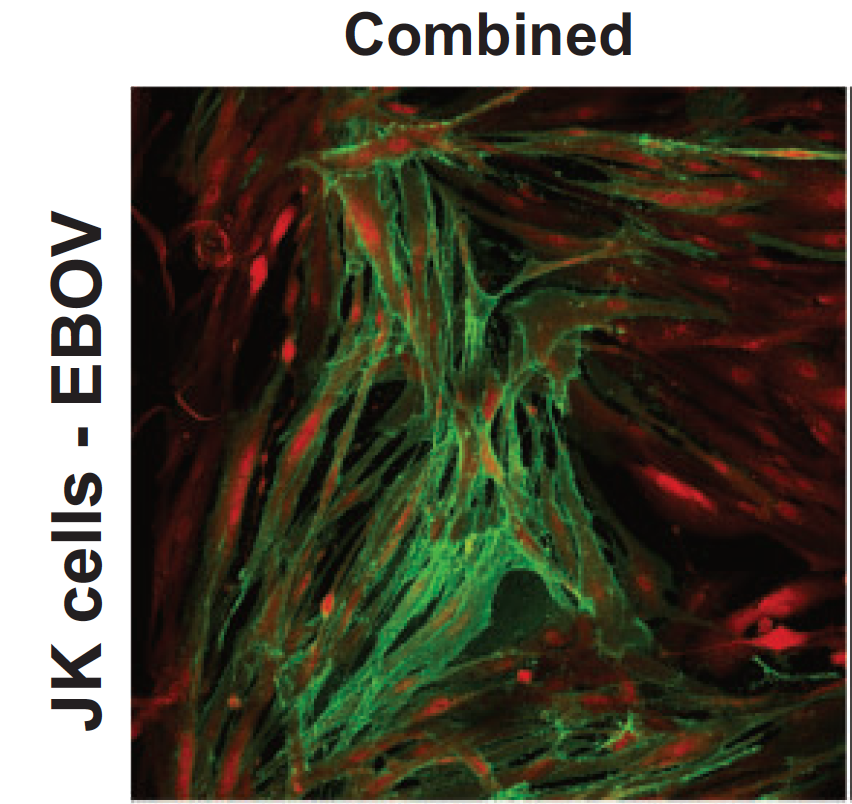Abstract
Ebola virus (EBOV) disease is a viral hemorrhagic fever with a high case-fatality rate in humans. This disease is caused by four members of the filoviral genus Ebolavirus, including EBOV. The natural hosts reservoirs of ebolaviruses remain to be identified. Glycoprotein 2 of reptarenaviruses, known to infect only boa constrictors and pythons, is similar in sequence and structure to ebolaviral glycoprotein 2, suggesting that EBOV may be able to infect reptilian cells. Therefore, we serially passaged EBOV and a distantly related filovirus, Marburg virus (MARV), in boa constrictor JK cells and characterized viral infection/replication and mutational frequency by confocal imaging and sequencing. We observed that EBOV efficiently infected and replicated in JK cells, but MARV did not. In contrast to most cell lines, EBOV-infected JK cells did not result in an obvious cytopathic effect. Surprisingly, genomic characterization of serial-passaged EBOV in JK cells revealed that genomic adaptation was not required for infection. Deep sequencing coverage (>10,000×) demonstrated the existence of only a single nonsynonymous variant (EBOV glycoprotein precursor pre-GP T544I) of unknown significance within the viral population that exhibited a shift in frequency of at least 10 per cent over six serial passages. In summary, we present the first reptilian cell line that replicates a filovirus at high titers, and for the first time demonstrate a filovirus genus-specific restriction to MARV in a cell line. Our data suggest the possibility that there may be differences between the natural host spectra of ebolaviruses and marburgviruses.
